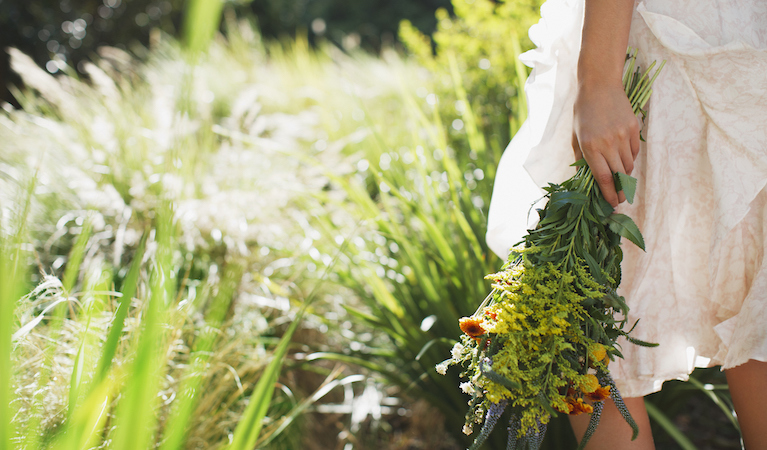Spring is in the air, and if you have a garden it’s time to start showing it some love! With warmer weather on its way, it will feel like no time at all until you and the family are wanting to be outside enjoying fresh air and sunshine. But you will enjoy it even more if your garden is looking its best.
If you have neglected your garden over winter, don’t panic. You still have time to rescue it! Try to earmark a couple of weekends when you can really focus on the garden. Get the whole family involved, and also see if you can enlist a few extra helpers. Many hands make light work, as they say, and there are so many different jobs to do in the garden that there will definitely be something suitable for everyone.
Once you have the time and the people, here are the most important five things to focus on:
Out with the old
The first thing to do when getting your garden ready for spring is to clear everything out that doesn’t need to be there. Think of it as resetting the counters to zero so that you can effectively start rebuilding your garden from scratch again. Do these three things and you will be making headway:
Clear up all garden debris
If your lawn and beds are covered with leaves, stalks and other debris, make it your first priority to get rid of these. This in itself will start to make a difference. If you have a compost bin you can put most of this debris in there, to be used as mulch later.
Spring is the ideal time to tackle weeds. This is when you can catch them before they have the chance to grow out of all proportion. Also the ground should be more moist than in winter so in theory they should be able to be pulled out more easily. But also look at different types of weed killer to help. Then, once they are out, you may want to cover the beds with either mulch or a weed control fabric to discourage further growth.
Prune everything right back
Examine all your garden trees, shrubs and plants carefully and prune back where needed. Start with the obvious things such as dead, diseased, or damaged stems as soon as you see them. But also be brave and cut flowering plants back to the base as this will enable new flowers to flourish in the coming weeks and months. Also tidy up climbing plants such as ivy, honeysuckle, jasmine and wisteria – but be vigilant for any early birds who may be starting to build nests in there.
In with the new
Once you have cleared away as much garden debris and overgrowth that you can, it’s time to introduce some new residents. First of all, it’s a good idea to make a plan of your garden with as much detail as you can of what is already there. This helps you to identify the gaps, and also avoids you planting new items in amongst existing ones.
Once you have identified some good areas to plant, you could consider flowering bulbs such as tulips, daffodils and hyacinths or easy flowers to grow from seed such as sunflowers, zinnia, nasturtiums, marigolds, poppies or sweet peas. Another good option could be shrubs, small trees, climbers and hedges such as cotoneaster, ivy, or lavender.
You may also want to consider starting a fruit or vegetable patch in your garden this year. Ideally you need to find a level area that has a reasonable amount of sunshine and is also sheltered from wind. If the soil in your garden contains a lot of chalk or clay, it may be easier to grow your veg in raised beds. Seeds can be sown directly into the soil from around March, and some easy fruit and veg to start with are potatoes, beans, courgettes, radish, beetroot, strawberries and rhubarb.
Revitalise your lawn
Grass is evergreen but during the winter becomes dormant, and can easily be damaged. This can be reduced by avoiding excess walking on it, and perhaps also putting down a covering such as wood or strong card in particularly vulnerable areas. If your lawn has been lifted by frost, a good starting point is to go over it with a roller to flatten it back down again.
Two other common areas of damage over winter are moss and worm casts. If there are moss patches, use a bit of moss killer to remove them before doing anything else to your lawn. And if there are worm casts, dry brushing with a broom should dislodge these.
Once your grass begins to grow you can give it its first trim of the year. It’s a good idea to set your lawn mower blades to the highest setting so that this is just a light trim and doesn’t do any damage by being too harsh.
If your lawn is looking a bit patchy, now is a good time to add some new grass seed to fill things out. It is also well worth aerating your lawn using either an aerator or garden fork. Aerating enables the soil under the grass to drain freely and can be even more effective if you then fill in the aerating holes with compost as this helps to improve drainage.
Hit the decks
Whether you have a patio or decking in your garden, or even both, they will probably not be looking their best after winter. At the very least, give them a good clean with a pressure washer. This can make a dramatic difference and brighten up your whole garden.
Spring is also the ideal time to replace a patio or decking, or add a patio or decking to another part of your garden. Don’t rush into this : make sure that you are getting the right kind of materials that will work in your garden, and also that you are choosing the best place for your new patio or decking, depending for example on whether you prefer direct sunlight or shade.
With a bit of careful planning you can restructure your garden to be more suitable for your family’s needs and create some practical yet stylish outdoor living space that you will use again and again.
Fixtures, fittings and furniture
Early spring is also a good time to make sure that all garden fixtures, fittings and furniture are in the best possible condition. Firstly check all fencing and any outbuildings such as sheds, greenhouses or summerhouses. If anything needs repairing, get it sorted in spring so that there is more time to enjoy your garden during the summer
Spring is also the time to give your garden furniture a good clean. Wooden garden furniture can be washed with sugar soap, and may also benefit from a coat of oil to get it back into tip top condition. If it’s looking a little tired, you may also decide to repaint it. If you have metal furniture that is rusting, this can usually be removed with a mixture of baking soda and water. Mix into a thick paste, gently apply with a cleaning cloth and leave it on for around 20 minutes before scrubbing off with wire wool.
If you decide it’s time to replace your garden furniture, you don’t need to spend a small fortune. You may be able to buy a used set very cheaply – or even get it for free – through online sites such as Facebook Marketplace, Gumtree and Freecycle. Competition is likely to be fierce, so make sure you respond promptly and politely to messages from the seller, and stick to collection and payment arrangements once these are made.
We hope this article has inspired you to get out in the garden and start getting it ready for spring. Just remember, the more effort you put in now, the more you will be able to enjoy your garden when the warmer weather arrives.
And if your garden needs a bit of money spending on it to get it looking its best, remember that Loans 2 Go offers online loans that may be able to help.
Do visit us here again soon for more lifestyle and financial tips from Loans 2 Go.


 Now is the time to start planning your financial goals for 2026
Now is the time to start planning your financial goals for 2026 
















